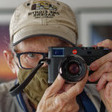Shooting in manual mode with a M10 capturing images as DNG.
-
Recently Browsing 0 members
- No registered users viewing this page.
-
Similar Content
-
- 7,194 replies
- 942,785 views
-
- 21 replies
- 1,010 views
-
- 6,024 replies
- 561,591 views
-
- 8 replies
- 360 views
-
- 73 replies
- 3,885 views
-


Recommended Posts
Join the conversation
You can post now and register later. If you have an account, sign in now to post with your account.
Note: Your post will require moderator approval before it will be visible.